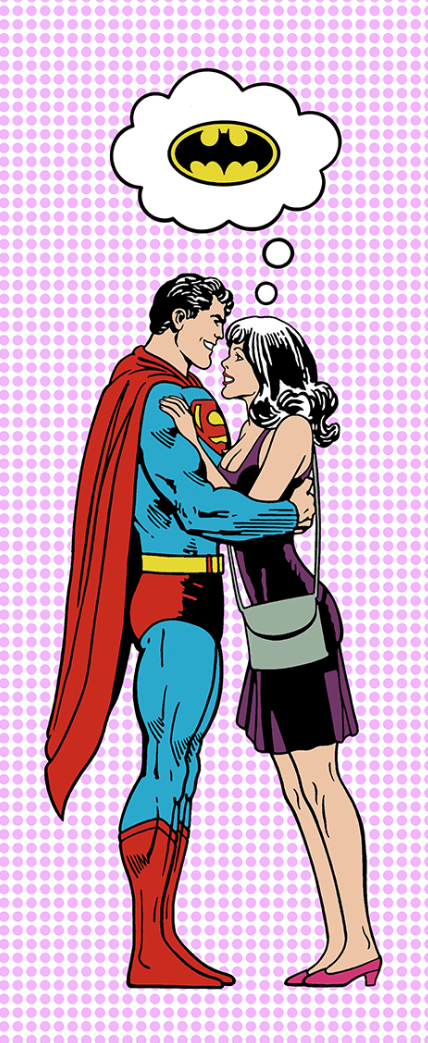
Divorce Through the Lens of Street Pop Art and Graffiti
Divorce, a subject deeply rooted in personal experiences and societal discourse, finds a poignant expression in street pop art and graffiti. Artists have long used public spaces as platforms for commentary on personal and social issues, and the topic of divorce is no exception. The visuals that address this theme are often laden with emotion, sometimes employing stark imagery or irony to communicate the complex feelings associated with the dissolution of a marriage. Divorce, as a social and personal phenomenon, has long been a topic of discussion, debate, and artistic expression. In recent years, we have seen an increasing number of artists, particularly graffiti and street artists, exploring the theme of divorce in their work. These artists utilize the urban landscape as their canvas, using spray paint, stencils, and other mixed media to depict the various facets of divorce. This essay will delve into how these artists portray divorce, the significance of their choice to represent this theme in graffiti and street art, and the impact their work has on the broader community. Using graffiti and street art to explore the topic of divorce is not accidental. These art forms have historically been used to express social and political commentary, often depicting subjects that are marginalized, controversial, or otherwise not discussed in mainstream artistic channels. In this way, street artists can give a voice to those experiencing the pain, loss, and struggle of divorce, providing a platform to share their stories and shed light on a subject often stigmatized and hidden from public view. Divorce, as a subject in graffiti and street art, is portrayed in various ways, reflecting the diverse experiences and emotions of those who have gone through it. Some artists choose to depict the raw emotional pain associated with divorce, using powerful imagery such as shattered hearts, broken homes, and tear-streaked faces to convey the deep anguish that can accompany the end of a marriage. Others focus on the legal and financial aspects of divorce, highlighting the complexities and inequities of the system through satirical caricatures of lawyers, judges, and the individuals caught in the process.Additionally, some street artists use their work to address the impact of divorce on children, incorporating childlike figures and symbols to represent the vulnerability and confusion that young people can experience during this tumultuous time. These pieces often feature a juxtaposition of bright, colorful imagery with dark, unsettling themes, reflecting the contrasting emotions that children may feel as they navigate their new family dynamics. Another approach graffiti and street artists take when addressing divorce is exploring the concept of personal growth and transformation. Some artists portray the idea of moving on from a failed marriage, using imagery such as butterflies, phoenixes, or other symbols of rebirth to represent the potential for positive change and growth in the aftermath of divorce. In this way, these artists challenge the narrative that divorce is solely a negative experience, emphasizing the possibility of healing and growth. The choice to address the topic of divorce in graffiti and street art is also significant due to the inherently public nature of these art forms. By displaying their work in public spaces, these artists raise awareness about the complexities of divorce and encourage dialogue and debate around the issue. In doing so, they challenge societal norms and expectations regarding marriage and family, prompting viewers to question their assumptions and biases. Furthermore, using graffiti and street art to address divorce can empower both the artists and their audience.
Visual Metaphors and Symbolism in Artistic Expressions of Divorce
In street pop art, the portrayal of divorce may manifest through visual metaphors that represent the severance of a once-shared life. Artists might use split imagery, contrasting colors, or fragmented compositions to symbolize the division that divorce creates. These artistic expressions resonate with viewers who see their personal experiences reflected in the visceral imagery of street art. The power of graffiti lies in its immediacy and accessibility, often sparking community conversations around the topic and providing a raw, unfiltered look at the emotional landscape of divorce. The narratives around divorce in street pop art and graffiti are as diverse as the artists who create them. Some may critique the legal and religious institutions that govern marriage, while others might delve into the emotional journey of those involved. The public nature of street art allows these personal stories to emerge from the private sphere, highlighting the shared human experiences that underlie the statistics and legalities of divorce. The exploration of divorce within street pop art and graffiti artwork is not about making a universal statement but about opening a dialogue that considers the multifaceted nature of the topic. Each piece serves as a singular testament to the artist’s perspective, yet it contributes to a broader discourse that can foster empathy, understanding, and healing. Creating these works allows the artists to process their own experiences and emotions, providing a cathartic outlet for their pain, anger, or frustration. For the audience, encountering these pieces can give a sense of solidarity and understanding, particularly for those who have experienced divorce. In this way, these works can foster community and connection among those affected by divorce.In conclusion, exploring divorce in graffiti and street art is a powerful and significant artistic movement. By addressing this complex and often stigmatized subject, these artists provide a voice for those who have experienced the pain, loss, and struggle of divorce while also challenging societal norms and expectations around marriage and family.
Furthermore, their work serves as a platform for dialogue, understanding, and connection, highlighting the importance of engaging with complex topics and fostering empathy within our communities. Ultimately, the depiction of divorce in graffiti and street art reflects the diverse experiences of those who have gone through it and plays a critical role in breaking down barriers, encouraging open discussion, and promoting healing and personal growth. As graffiti and street art continue to evolve and gain recognition as legitimate forms of artistic expression, we will likely see even more artists exploring the topic of divorce and its multifaceted implications. The conversation around divorce will expand with each new piece, shedding light on the myriad perspectives and experiences often overlooked or silenced. In a broader sense, the exploration of divorce in graffiti and street art serves as a reminder of the power of art to confront and challenge societal norms, to give voice to the voiceless, and to foster empathy and understanding among diverse groups of people. By continuing to push the boundaries of artistic expression and engaging with challenging subjects like divorce, these artists are transforming the urban landscape and contributing to the ongoing dialogue about love, loss, and resilience in the face of adversity. Ultimately, the portrayal of divorce in graffiti and street art is not merely an artistic choice but a powerful statement about the importance of addressing complex social issues through creative expression. As these artists continue to explore the intricacies of divorce and its impact on individuals, families, and society, they will undoubtedly play a crucial role in shaping our understanding of this deeply personal and universally relatable experience.


